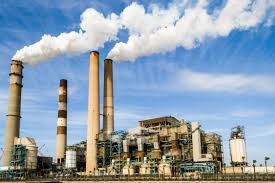Optimizing Waste Management in Industry for Environmental Sustainability

(Source: http://universaleco.id)
Optimizing Waste Management in Industry for Environmental Sustainability
By Muhammad Farhan
The problem of industrial waste in Indonesia is very complex because there are still many industries that neglect handling waste produced from industrial processes. Industrial waste is residue or waste material produced in industrial processes, in various forms such as solid, liquid or gas, depending on the type of industry that produces it. Many of these wastes contain hazardous materials such as heavy metals, solvents, and pesticides, which have the potential to harm the environment and human health. As industrial areas continue to develop, the amount of industrial waste will also continue to increase, so waste handling needs to be done appropriately to prevent environmental damage that can disrupt the lives of humans, animals and plants. Therefore, an in-depth understanding of the types of industrial waste, their impacts, and handling solutions is very important.
In the context of industry and factories, the waste produced comes in three main forms, namely solid, liquid and gas waste. An explanation of the three forms of waste can be seen below:
- Solid Waste : Solid waste is a type of industrial waste which generally includes materials such as scrap metal, wood chips, concrete debris, paper, plastic and powder left over from production processes, with characteristics that vary greatly depending on the type of industry that produces it.
- Liquid Waste : Liquid waste generally includes wastewater from industrial processes, including residual cleaning or rinsing fluids, solvents, and pesticides, which have the potential to pollute water sources and damage aquatic life if not handled properly.
- Gas Waste : Gas waste although the amount is less than solid and liquid waste, has a significant impact because exhaust gases from industrial processes such as power plants and factories, including sulfur dioxide, nitrogen oxides and other particles, can cause air pollution and contribute to climate change .
Industrial waste has the potential to significantly damage the environment. This impact is not only limited to water, air and land pollution, but also includes damage to ecosystems and habitats that are vital for biodiversity.
- Water pollution is caused by industrial waste, especially liquid waste, which pollutes water bodies such as rivers, lakes and oceans, damaging water quality and disrupting human activities such as fishing and potentially damaging aquatic life.
- Air pollution is caused by exhaust emissions from industrial processes, which can pollute the air and potentially cause respiratory problems such as asthma and bronchitis, as well as contribute to the formation of smog and acid rain with far-reaching impacts on the environment and human health.
- Soil contamination by industrial solid and liquid waste can be dangerous for agriculture and pollute groundwater, which is an important source of human and ecosystem water needs.
- Habitat destruction can occur due to industrial waste that is not managed properly, causing loss of biodiversity and damage to ecosystems that are essential for natural balance.
- The spread of disease can occur due to industrial waste, especially liquid and gas waste, which has the potential to contain dangerous bacteria and viruses, spreading diseases such as cholera and typhoid fever through water pollution, and causing diseases such as tetanus and Lyme disease through soil pollution.
Several factors that contribute to the production of industrial waste include the use of hazardous materials such as heavy metals, solvents and pesticides in industrial processes which can cause waste pollution into the environment. Apart from that, improper waste disposal, such as disposal into rivers, land or rubbish dumps, can pollute the environment and damage the ecosystem. Lastly, there is a lack of strict regulations in some countries which can lead to inappropriate waste handling and potentially damage the environment.
To overcome the problem of industrial waste, various solutions must be implemented by all parties. One of them is the use of cleaner production technology, where industrial processes are designed to reduce the amount of waste produced through resource efficiency, use of environmentally friendly materials, and improved production technology. Apart from that, recycling and composting are also solutions by turning waste into new products or compost to reduce the impact of waste on the environment. Improving and upgrading waste management infrastructure is also important to ensure waste is disposed of properly and safely. Finally, the implementation of stricter and more effective regulations to prevent inappropriate disposal of industrial waste and ensure industry compliance with established environmental standards.
In conclusion, the industrial waste problem in Indonesia presents quite a big challenge due to the negligence of many industries in managing their waste effectively. Waste is produced in various forms including solid, liquid and gas, often containing hazardous materials that have the potential to have negative impacts on the environment and human health. In addition, industrial waste not only pollutes water, air and soil but also contributes to habitat destruction and the spread of disease, so a comprehensive waste management strategy is needed. Addressing these issues requires collaborative efforts, including the adoption of cleaner production technologies, recycling and composting initiatives, infrastructure improvements, and strict regulatory enforcement to ensure industry compliance with environmental standards. Through collective action, we can effectively mitigate the adverse impacts of industrial waste and create a sustainable environment for future generations.
Source:

